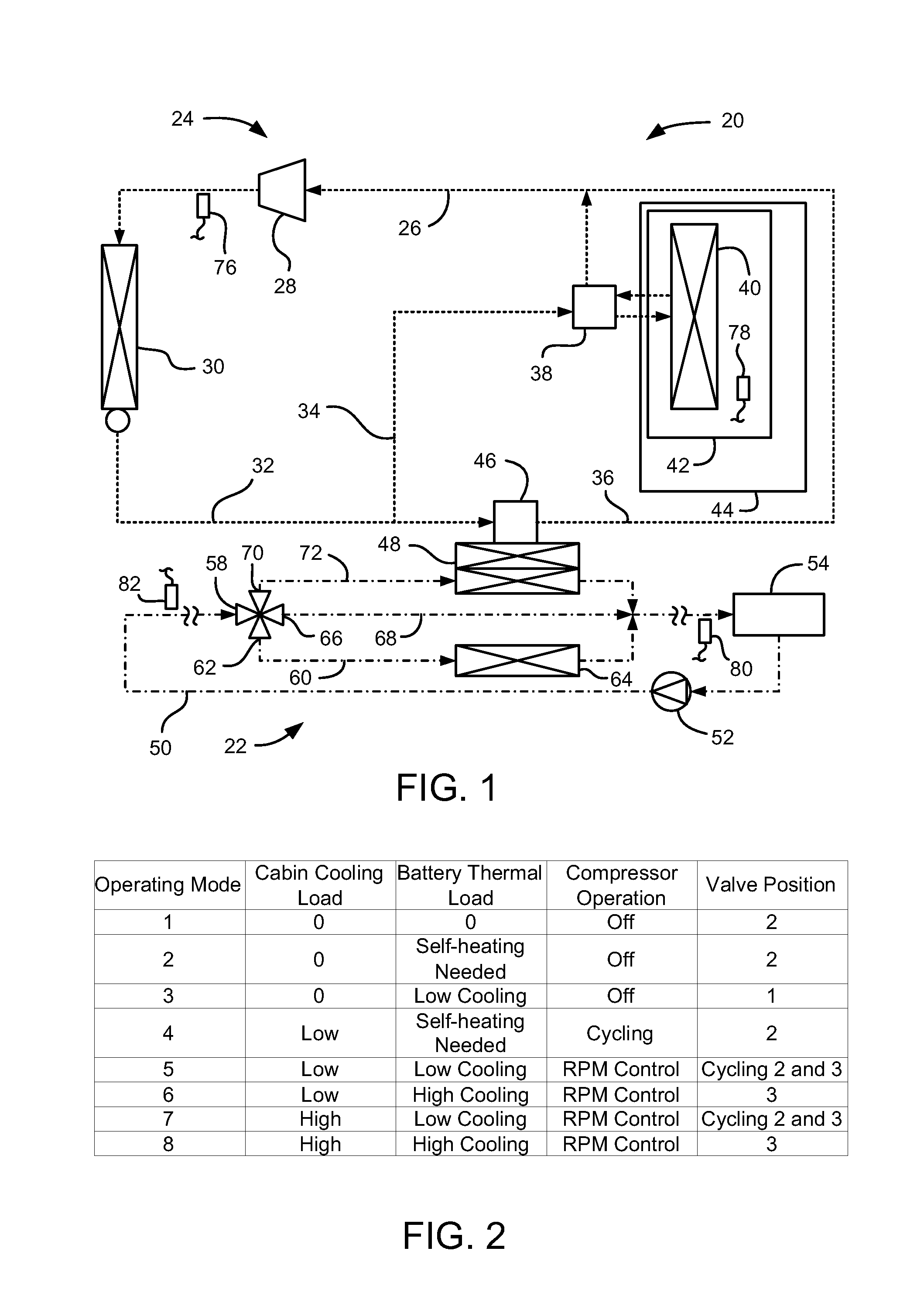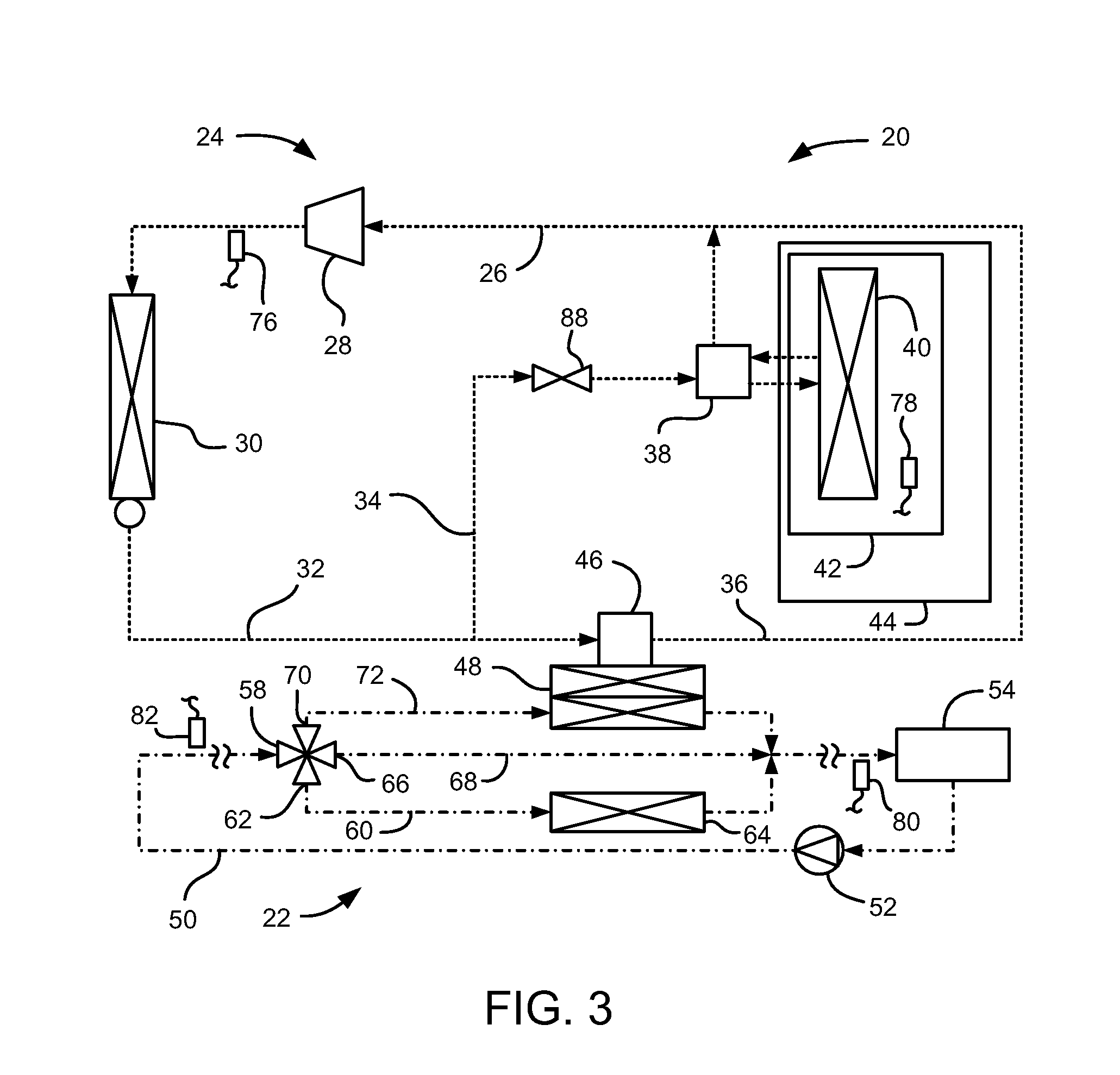HVAC and Battery Thermal Management for a Vehicle
a battery pack and thermal management technology, applied in the direction of heat measurement, instruments, domestic cooling apparatus, etc., can solve the problems of limited battery cooling capacity, low heat rejection, low heat transfer coefficient, etc., and achieve the effect of maximizing the battery li
- Summary
- Abstract
- Description
- Claims
- Application Information
AI Technical Summary
Benefits of technology
Problems solved by technology
Method used
Image
Examples
Embodiment Construction
[0011]Referring to FIG. 1, a portion of a vehicle, indicated generally at 20, includes a vehicle HVAC and battery thermal system 22. The system 22 includes an air conditioning portion 24 having a refrigerant loop 26. The refrigerant loop 26 includes a refrigerant compressor 28 and a condenser 30. The refrigerant compressor 28 may be electrically driven, with an ability to adjust the speed (RPMs) of the compressor during operation. The condenser 30, in turn, directs refrigerant into a refrigerant line 32 that forks into a first leg 34 and a second leg 36 of the refrigerant loop 26.
[0012]The first leg 34 directs refrigerant through an evaporator thermal expansion valve 38 (or other expansion device) into an evaporator 40, which is located in a heating, ventilation and air conditioning (HVAC) module 42 in a passenger cabin 44 of the vehicle 20. Refrigerant exiting the evaporator 40 is directed through a return portion of the evaporator thermal expansion valve 38 and back to the compres...
PUM
 Login to View More
Login to View More Abstract
Description
Claims
Application Information
 Login to View More
Login to View More - R&D
- Intellectual Property
- Life Sciences
- Materials
- Tech Scout
- Unparalleled Data Quality
- Higher Quality Content
- 60% Fewer Hallucinations
Browse by: Latest US Patents, China's latest patents, Technical Efficacy Thesaurus, Application Domain, Technology Topic, Popular Technical Reports.
© 2025 PatSnap. All rights reserved.Legal|Privacy policy|Modern Slavery Act Transparency Statement|Sitemap|About US| Contact US: help@patsnap.com



